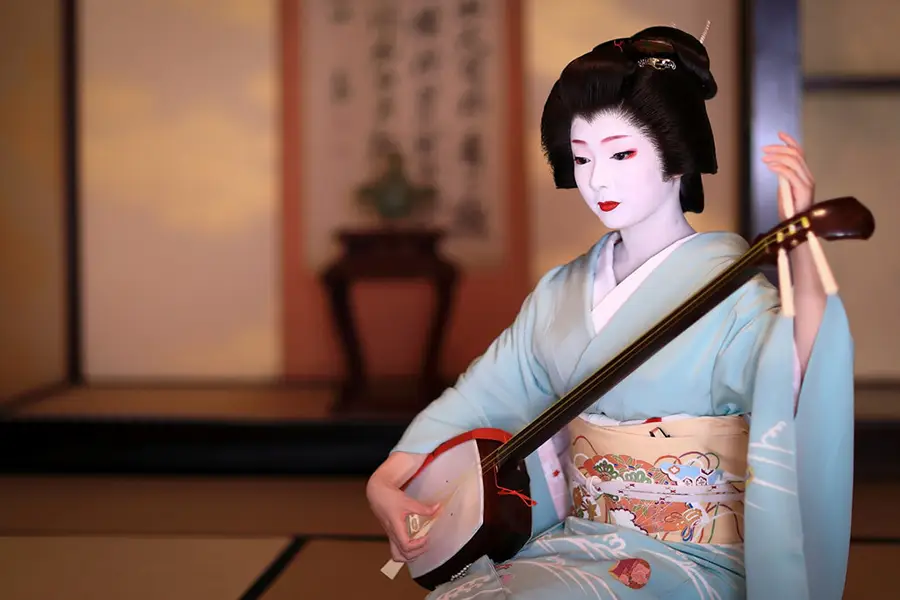
Confusion surrounding Geishas
Geishas are actually artists and have been since the beginning of the 18th century.
The widespread misconception that Geishas are prostitutes is simply not true. They are responsible for transmitting the art of shamisen music (a 3-stringed lute), singing and traditional Japanese dance (buyō). Geishas are also highly skilled in conversation, storytelling, poetry, the tea ceremony (chanoyu) and the art of flower arranging (ikebana).
Their role is to act as intermediaries between hosts and guests, assisting in moving projects forward or making decisions. Consequently, they receive invitations to banquets (sashiki) hosted in traditional, high-end restaurants (ryōtei) or tea rooms designated for them (hanamachi), or in private residences. The organiser should be well-versed in the art of entertaining in the presence of geishas and financially secure.
Only about 200 geishas remain today… Rest assured that there is currently heightened interest in this profession, resulting in a surge of apprentice Geisha (maiko). With luck, you may encounter one in a hanamachi (flower district) in the city of Kyoto, where they are particularly abundant.
